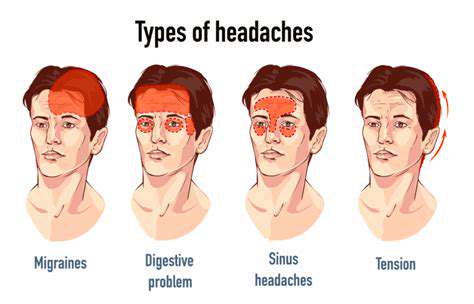Ice Pick Headaches: Understanding Sharp, Stabbing Pain
Vascular Issues
One potential cause of ice pick headaches is a problem with the blood vessels in the head and neck. These blood vessels can become constricted or dilated, leading to a sudden surge or drop in blood flow to the brain, which can trigger the intense, sharp pain characteristic of ice pick headaches. This disruption in blood flow can be influenced by various factors, including stress, changes in blood pressure, and even certain medications.
Certain medical conditions that affect blood vessels, such as vasculitis (inflammation of blood vessels), can also play a role in ice pick headaches. Understanding the role of vascular issues in these headaches is crucial for accurate diagnosis and targeted treatment strategies.
Trigeminal Neuralgia
Trigeminal neuralgia is a chronic pain condition that affects the trigeminal nerve, one of the major nerves in the face. Characterized by sudden, intense, stabbing pain, often triggered by seemingly innocuous stimuli like touching the face, brushing teeth, or even a gust of wind, it can mimic the sharp, brief pain of ice pick headaches. The pain is often described as electric shocks or lightning strikes, which can be incredibly debilitating.
This condition is often misdiagnosed as a simple headache. A proper diagnosis is essential, as treatment approaches for trigeminal neuralgia differ significantly from those for other types of headaches.
Migraine Variants
While not always immediately apparent, certain migraine variants can manifest with a sharp, ice pick-like pain. These variations, often accompanied by other migraine symptoms such as aura, nausea, or sensitivity to light and sound, can sometimes be difficult to distinguish from other types of headaches.
Recognizing the nuances of migraine variants is crucial for timely intervention and effective management of the pain and associated symptoms. Understanding the potential for migraine to present with a sharp, ice pick-like quality is essential for accurate diagnosis.
Other Neurological Conditions
A range of other neurological conditions can sometimes present with sharp, stabbing pains that mimic ice pick headaches. These conditions could involve nerve compression, inflammation, or even tumors in the head and neck region. The presence of other neurological symptoms, such as weakness, numbness, or vision changes, could indicate the need for further investigation.
Medication Side Effects
Certain medications, both prescription and over-the-counter, can have unexpected side effects, including headaches. These side effects can sometimes manifest as sharp, brief pains resembling ice pick headaches. Careful consideration of recent medication changes, including dosages and types, can help identify potential triggers.
It's essential to consult with a healthcare professional to determine if a medication is contributing to the headaches and explore alternative treatment options if necessary. This is particularly important if the headache is accompanied by other symptoms.
Stress and Tension
While often associated with more persistent aches, stress and tension can sometimes contribute to sharp, ice pick-like headaches. The body's response to stress can trigger various physiological changes, including altered blood flow and nerve activity, that could lead to the characteristic pain. Identifying stress triggers and implementing stress-reducing techniques can be a crucial component of managing these headaches.
Addressing underlying stress factors, whether through relaxation techniques, lifestyle changes, or professional support, can often help reduce the frequency and intensity of these headaches.






